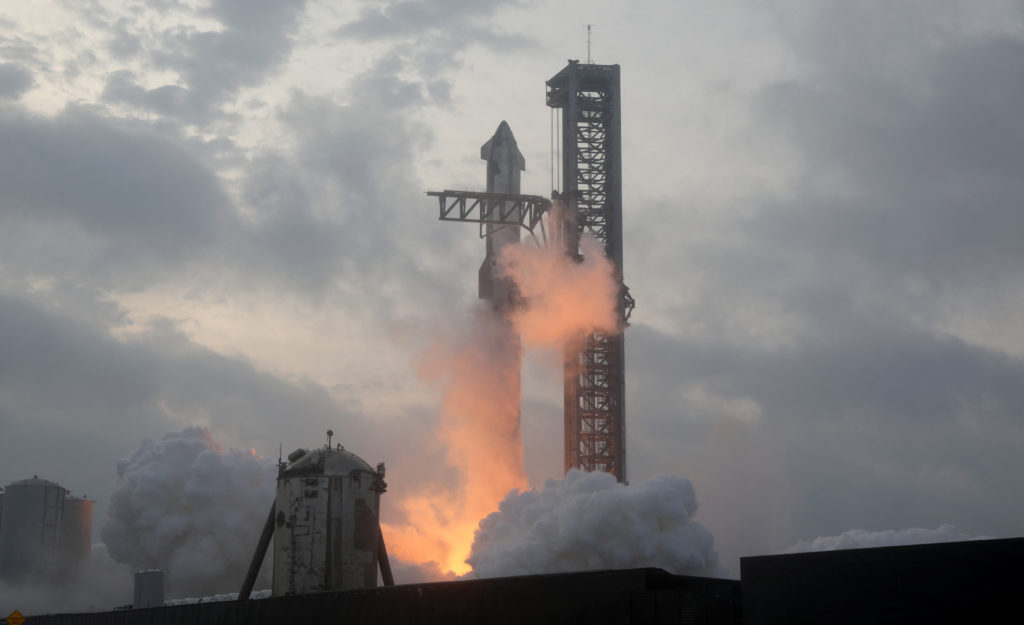
SpaceX is in discussions with officials from the United States and Australia to gain approval for landing and recovering one of its Starship rockets off the Australian coast. This potential milestone would mark the first time the company conducts such operations in the region, aligning with broader U.S.-Australia security cooperation.
The discussions come after a significant event in June, when a Starship rocket successfully executed a controlled splashdown in the Indian Ocean. This move is part of SpaceX’s efforts to broaden its testing campaign, involving launching Starship from Texas and landing it in Australian waters for recovery on Australian soil.
To move forward with these plans, SpaceX must address U.S. export controls on advanced space technologies, which currently restrict such technologies from being transferred to Australia. The Biden administration has shown interest in easing these restrictions within the AUKUS security alliance, which includes the United States, Australia, and the United Kingdom. This alliance aims to strengthen defense cooperation in the face of growing challenges from China in the region.
Sources close to the discussions revealed that the ideal scenario would involve towing the Starship to a nearby port on either the western or northern coast of Australia after a successful landing. However, specific locations and plans are still being negotiated.
This development underscores the U.S.’s commitment to assisting Australia in enhancing its military capabilities, particularly as a deterrent to China’s increasing assertiveness.
Deepening U.S.-Australia Space Ties
The proposed arrangement with SpaceX highlights a deepening trust in Australia, a key American ally that has long sought to bolster its space defense program and strengthen ties with the U.S. in both civil and military space activities.
Recent discussions between SpaceX executives and government officials from both countries have focused on overcoming regulatory challenges associated with bringing a recovered Starship booster to Australian shores. The timeline for the potential landings remains uncertain as these talks are ongoing.
Future Prospects for SpaceX in Australia
The potential test landings in Australia are seen as an initial phase that could lead to a more significant presence for SpaceX in the country. Future possibilities include establishing a launch facility in Australia or transitioning from sea landings to ground landings on the continent. These discussions are still in the early stages.
SpaceX’s approach mirrors its strategy with the Falcon 9 rocket, which initially utilized ocean-based landings before moving to land-based recoveries. The Falcon 9’s first-stage booster has since become a mainstay in SpaceX’s operations, achieving numerous routine landings.
Starship’s Recent Success
Starship, a 400-foot (120-meter) tall two-stage rocket, is designed to be fully reusable. It is SpaceX’s next-generation rocket system, capable of deploying large satellite constellations, transporting NASA astronauts to the lunar surface, and potentially delivering military cargo around the world in approximately 90 minutes.
The June test flight marked Starship’s most successful mission to date. It involved launching from Texas on a suborbital trajectory, which led to a soft splashdown in the Indian Ocean after the rocket reentered Earth’s atmosphere at hypersonic speeds. The SuperHeavy booster, Starship’s first stage, landed in the Gulf of Mexico.
Previous test flights saw Starship disintegrate before achieving a safe landing. The success of the June flight has encouraged SpaceX to proceed with a new phase of more complex landing tests.
The U.S. Air Force Research Laboratory’s “Rocket Cargo” program, which explores the use of suborbital rockets for rapid military cargo delivery, viewed the June test as a significant demonstration. This program envisions using rockets like Starship for global cargo deliveries in under 90 minutes, leveraging:
- Orbital Velocity: 17,000 miles per hour (27,350 kph)
- Hypersonic Reentry Capabilities: Critical for rapid delivery
This approach could dramatically reduce delivery times compared to traditional aircraft, which typically take 12 to 24 hours.
Since 2021, SpaceX has been exploring the use of Starship for cargo deliveries under a $102 million contract with the Pentagon. The program is expected to advance to a more serious prototype stage in collaboration with the U.S. Space Force by 2025.
Featured Image courtesy of Joe Skipper/REUTERS
Follow us for more space exploration news.
